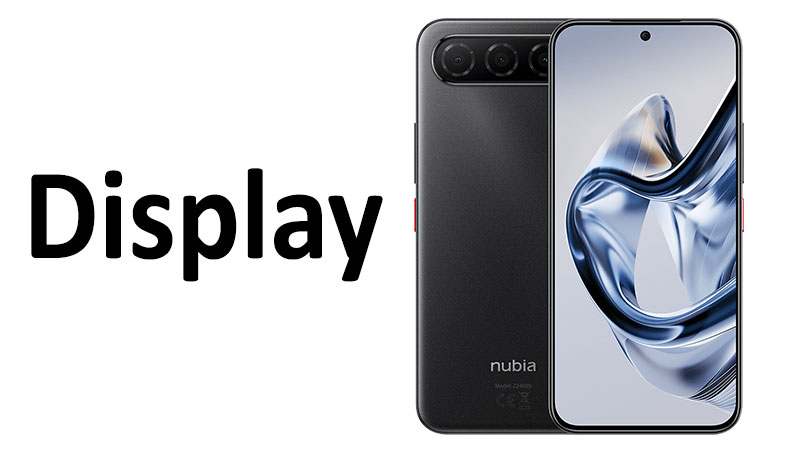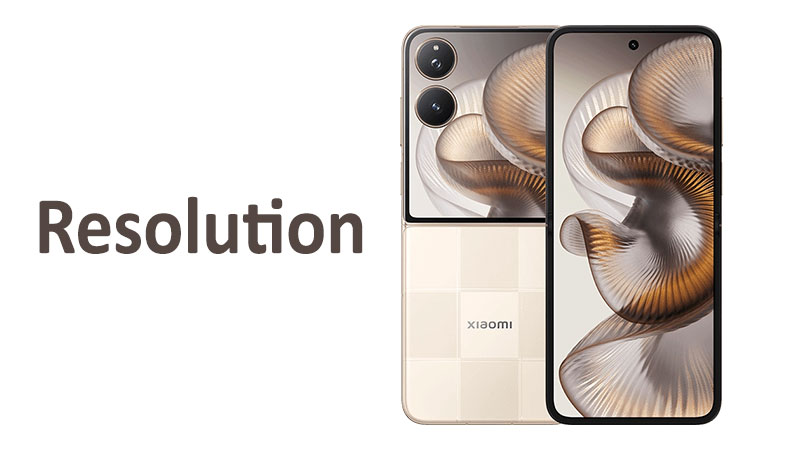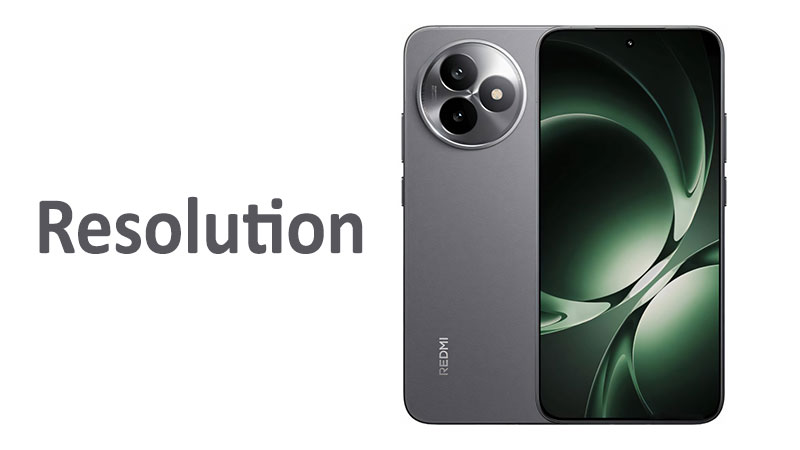The ZTE nubia Air Display review starts here. This smartphone screen promises a fusion of flagship technology and accessible design. ZTE aims to redefine the user experience with its latest device. We will deeply examine its quality, resolution, and features today. This comprehensive article covers every key aspect of this display technology. We help readers decide if this screen meets their demanding visual needs.
Comprehensive Look at the ZTE nubia Air Display Technology
A modern smartphone’s screen is its most important feature. It serves as the primary gateway to all digital interaction. The ZTE nubia Air incorporates several cutting-edge display technologies. These choices position it as a formidable competitor in the current mobile market. We focus on four major aspects: panel type, size, refresh rate, and brightness.
The Foundation: AMOLED Panel Excellence
The ZTE nubia Air utilizes an AMOLED panel. This choice immediately positions the phone for premium visual performance. AMOLED stands for Active-Matrix Organic Light-Emitting Diode. This technology offers significant advantages over traditional LCD panels.
How AMOLED Improves Quality
Each individual pixel emits its own light source on an AMOLED screen. This feature means pixels can turn completely off when displaying black. The result is perfect black levels and an effectively infinite contrast ratio. Colors appear incredibly vibrant and deep on this type of display. This quality greatly enhances the viewing of multimedia content. Consumers benefit from a more immersive experience for movies and photos.
Specialized Comparisons and Market Position
Many competing devices, particularly in the mid-range segment, still rely on less vibrant LCD technology. Furthermore, some older flagship models lacked this level of AMOLED sophistication. The nubia Air immediately differentiates itself with its vibrant panel. It provides a superior foundation for color accuracy and depth. This technology choice delivers a truly flagship-level look.
Pros and Cons of AMOLED on the nubia Air
The pros of the AMOLED panel are clear. You get stunning contrast and brilliant color reproduction. The deep blacks make content truly pop off the screen. Additionally, the thin nature of AMOLED helps ZTE achieve the phone’s sleek profile. A potential, minor drawback is the historical risk of screen burn-in. However, modern manufacturing processes have largely mitigated this concern. Users should still avoid displaying static, high-contrast elements for extended periods.
Important Buyer Considerations
A buyer gains phenomenal visual quality from choosing an AMOLED device. This panel is ideal for streaming HDR content and detailed photo editing. Check the display settings for an “Always-On Display” feature. AMOLED panels consume very little power when only a few pixels are lit. This makes the Always-On feature highly battery-efficient on the nubia Air.
Immersion and Real Estate: Display Size and Ratio
The ZTE nubia Air features a substantial 6.78-inch display size. This large canvas provides an immersive viewing area. Large screens are now the expectation for premium smartphone experiences. The expansive size makes it excellent for demanding tasks. These tasks include gaming, multitasking, and media streaming.
Screen-to-Body Ratio: Maximizing the View
The display achieves an impressive screen-to-body ratio of approximately 88.2%. This figure represents the display area’s percentage relative to the phone’s front surface. A high ratio indicates minimal bezels around the screen. Thin bezels lead to a more modern and uninterrupted viewing experience. The nubia Air successfully minimizes wasted space on the front of the device.
Comparing Size and Design
Many competitors sit closer to the 6.5-inch mark. The nubia Air offers noticeably more screen real estate than these alternatives. This 6.78-inch size places it firmly in the large phone category. However, the high screen-to-body ratio helps keep the overall phone size manageable. ZTE maximized the display without making the device overly bulky.
Pros and Cons of the Large Display
A larger screen makes reading documents and browsing the web more comfortable. It also significantly improves the gaming experience. The main drawback is single-handed use. Users with smaller hands might find reaching the top corners slightly challenging. Furthermore, a larger screen naturally requires more power to light up all pixels. This larger size necessitates a strong battery management system.
Key Points for the Reader
Readers should confirm this screen size fits their comfort level. People who prioritize media consumption will love the expansive view. Users seeking ultimate portability may prefer a slightly smaller device. The narrow 20:9 aspect ratio makes the phone tall. This design choice optimizes the screen for scrolling and cinematic video viewing.
Sharpness Defined: Resolution and Pixel Density
The ZTE nubia Air boasts a high resolution of 1224 x 2720 pixels. This resolution delivers exceptional clarity and detail. This goes beyond the standard Full HD+ resolution found in many other phones. It is often referred to as 1.5K or QHD-level resolution.
Pixel Density: The Clarity Metric
The display achieves a pixel density of approximately 440 pixels per inch (ppi). Pixel density is the true measure of display sharpness. A density of 440 ppi means individual pixels become virtually invisible to the naked eye. The image quality appears sharp and incredibly clear. Text looks crisp, and fine details in photos are rendered accurately. This high density is crucial for tasks requiring precision.
Specialized Resolution Comparisons
The 1224 x 2720 resolution sits between the common FHD+ (around 1080p) and true QHD+ (around 1440p) resolutions. This is an intentional engineering choice. It offers better sharpness than FHD+ screens. At the same time, it consumes less battery power than a full QHD+ panel. Competitors often stick to 1080p to conserve cost and battery life. The nubia Air provides a noticeable upgrade in sharpness over these rivals. It balances visual fidelity with energy efficiency.
Pros and Cons of the High-Density Panel
The primary advantage is the outstanding visual fidelity. Everything displayed on the screen benefits from the high ppi count. The display looks flawless and detailed. A minor con is the slight increase in battery consumption compared to a lower-resolution panel. The processor also works harder to render graphics at this high pixel count. This is a small trade-off for the clarity gained.
Important Information for the Buyer
Buyers should recognize the value of this resolution choice. It represents a significant upgrade for viewing high-resolution images. It is also perfect for reading lengthy digital books. The difference in text clarity is immediately apparent compared to a standard 1080p screen. This feature enhances daily interaction and long-term eye comfort.
Fluidity Mastered: The 120Hz Refresh Rate
The ZTE nubia Air incorporates a 120Hz refresh rate. This feature is now considered essential for a premium smartphone experience. The refresh rate dictates how many times the screen updates its image per second. A 120Hz rate means the screen refreshes 120 times every second.
The Visual Impact of High Refresh Rate
This rate translates directly to much smoother motion on the display. Scrolling through websites becomes butter-smooth and seamless. App transitions feel instantaneous and fluid. The biggest beneficiary of this high rate is mobile gaming. Fast-paced action appears clearer and more responsive. The lower input lag also gives gamers a slight competitive edge.
Comparisons with Standard Displays
A standard smartphone screen operates at 60Hz. The nubia Air’s 120Hz rate updates the image twice as fast. This difference is dramatic and instantly recognizable. Once a user experiences 120Hz, returning to a 60Hz display feels noticeably choppy. Even some phones currently priced higher than the nubia Air may still use a 90Hz panel. The 120Hz rate is a true premium feature in this device.
Pros and Cons of 120Hz
The main pro is the unparalleled visual fluidity across the entire operating system. This improves everything from opening an app to watching high-frame-rate videos. The drawback is the potential impact on battery life. Displaying frames twice as often consumes more power. However, the ZTE nubia Air likely employs adaptive refresh technology. This allows the display to automatically drop to 60Hz or lower when viewing static content. This smart adjustment helps save battery power effectively.
Key Takeaways for the Reader
Readers should look for options to manage this setting. The user can often manually switch between 120Hz and 60Hz modes. This choice allows users to prioritize either smoothness or battery longevity. For the best experience, keep the 120Hz rate active for all general use. This feature drastically improves the phone’s perceived performance speed.
Visibility Beyond Compare: 4500 Nits Peak Brightness
The ZTE nubia Air boasts an extraordinary peak brightness of 4500 nits. This figure represents the maximum brightness the screen can achieve. This peak brightness is typically utilized when viewing specific HDR content. It also plays a vital role in extreme outdoor visibility.
The Importance of High Brightness
High brightness is crucial for two main scenarios. First, it ensures excellent readability under direct sunlight. Sunlight can easily wash out dimmer screens. The 4500-nit capability fights this glare effectively. Second, it is essential for rendering high-dynamic-range (HDR) content. A higher peak brightness allows for more striking highlights in movies and shows. This feature provides a more true-to-life visual experience.
Flagship Brightness Comparisons
The 4500-nit peak brightness is an extremely high figure. It surpasses the peak brightness of most current flagship smartphones. Many premium phones currently peak around 2,500 to 3,000 nits. The nubia Air sets a new benchmark in terms of brightness capability. This ultra-bright screen is a key differentiator in the market. It offers a clear advantage over both mid-range and established flagship models.
Pros and Cons of Extreme Brightness
The primary advantage is outstanding outdoor visibility. You will never struggle to see the screen, even on the brightest day. This ensures navigation and communication remain effortless outdoors. The other advantage is the dynamic range for HDR media. The display can produce spectacular, vibrant highlights. There is a potential con related to heat. Running the display at its absolute peak brightness generates heat. This peak is usually limited to small areas of the screen for short durations. The phone’s thermal management system controls this effectively.
Essential Information for the Buyer
Buyers should know the typical brightness in daily use will be lower. The automatic brightness setting controls this standard level for comfort and battery life. The 4500 nits only represents the localized peak in specialized conditions. Nevertheless, this high capability confirms the quality of the AMOLED panel used. It guarantees a superior viewing experience for all users.
The Shield: Durability and Protection Features
Display protection is just as important as the visual specifications. The ZTE nubia Air display uses Corning Gorilla Glass 7i protection. This robust material defends the screen against physical damage. Durability is a key factor in the long-term enjoyment of any smartphone.
Gorilla Glass 7i: Advanced Resilience
Corning Gorilla Glass 7i is a specific iteration of advanced protective glass. It provides superior resistance against scratches and deep cracks. This protection helps the screen survive accidental drops and everyday wear. ZTE committed to high-quality materials to protect the delicate AMOLED panel underneath.
Mohs Hardness Level 5
The specification also mentions a Mohs level 5 hardness. The Mohs scale measures mineral hardness. Level 5 indicates a high degree of resistance to scratching from common materials. Items like keys or coins in a pocket should not easily damage the screen. This level of hardness contributes significantly to the display’s longevity.
Comparison and Buyer Confidence
Some competitor phones use older versions of Gorilla Glass or generic protective glass. The inclusion of Gorilla Glass 7i demonstrates ZTE’s focus on comprehensive quality. This material gives buyers confidence in the phone’s durability. It means the display will likely look pristine for longer.
Pros and Cons of Enhanced Protection
The obvious pro is the peace of mind the protection offers. The screen is well-guarded against daily hazards. A con is the fact that no screen is completely impervious to damage. Gorilla Glass 7i offers high protection but glass can still break. Always consider using a screen protector and a case for maximum safety.
Overall Display Pros and Cons Summary
The ZTE nubia Air display presents a compelling list of features. Its overall specification package rivals true high-end flagship devices. We summarize the key advantages and potential drawbacks here. This overview helps readers weigh their purchasing decision carefully.
Key Advantages (Pros)
The use of an AMOLED panel guarantees perfect blacks and vibrant colors. The high resolution of 1224 x 2720 pixels ensures superb sharpness at 440 ppi. The 120Hz refresh rate delivers exceptional visual fluidity. This makes all interactions smoother. Furthermore, the 4500 nits peak brightness ensures unmatched outdoor visibility. Finally, the Gorilla Glass 7i offers strong, reliable protection.
Potential Drawbacks (Cons)
The large 6.78-inch size may be difficult for some users to handle with one hand. The 120Hz refresh rate, while excellent, requires more battery power. This forces the device to rely heavily on its adaptive settings. The ultra-high peak brightness is limited to specific HDR viewing conditions. The full 4500 nits is not available for standard, sustained usage.
Essential Buying and Reading Pointers
Understanding a display goes beyond its technical specifications. A potential buyer should evaluate how these features translate to real-world usage. Consider your primary mobile activities before making a purchase.
Prioritizing Media and Gaming
The ZTE nubia Air display is perfectly suited for entertainment enthusiasts. The AMOLED technology makes movies and streaming content look phenomenal. The 120Hz rate and large size are ideal for demanding mobile games. Gamers will appreciate the smooth motion and responsive feel. This screen is a dedicated tool for high-quality media consumption.
Outdoor Usage and Professional Needs
Users who spend significant time outdoors will benefit immensely from the 4500 nits brightness. Reading emails or viewing maps in bright sunlight becomes easy. This feature is particularly useful for professionals working outside. Clarity and visibility are never compromised, even in challenging lighting.
Focus on Adaptive Technology
Pay attention to the phone’s software features related to the display. The phone should offer smooth automatic brightness adjustment. It should also have an adaptive refresh rate system. These features ensure the phone optimizes power use efficiently. Good software implementation maximizes both battery life and screen quality.
Protecting Your Investment
Invest in a quality protective case and potentially a film screen protector. While Gorilla Glass 7i is highly durable, a physical shock can still cause damage. Protecting the screen is essential, especially with a high-end panel like this one. A small investment in accessories prevents a costly repair later on.
Conclusion: An Informed Decision on the Display
The ZTE nubia Air display is arguably the device’s standout feature. ZTE successfully combined several high-end technologies into one package. The panel offers a brilliant combination of sharpness, fluidity, and brightness. The AMOLED technology provides stunning contrast and color depth. The 120Hz rate ensures a modern, smooth user experience. Its 4500 nits peak brightness makes it a class leader in outdoor visibility.
The 1224 x 2720 resolution strikes a near-perfect balance. It delivers exceptional clarity without excessively draining the battery. Overall, the nubia Air offers a display experience that exceeds expectations for its segment. Consumers seeking top-tier visual performance should certainly consider this device. It is a fantastic screen for media, gaming, and everyday use.
Frequently Asked Questions (FAQ)
1. Does the ZTE nubia Air display support HDR content?
Yes, the 4500 nits peak brightness strongly indicates HDR support. This high capability allows the screen to properly render extreme bright and dark details. Streaming platforms can deliver high-dynamic-range content effectively.
2. Is 120Hz always active, or can I turn it off?
You can typically adjust the refresh rate in the display settings. Most phones offer a 60Hz or Standard mode. You can use this to conserve battery life when necessary. The phone also uses an adaptive system to automatically switch the rate.
3. What is the benefit of the 440 ppi density?
The 440 ppi density means the display is incredibly sharp. This high pixel density ensures text and fine details appear crisp and smooth. You will not see any individual pixels at normal viewing distances.
4. How does Corning Gorilla Glass 7i compare to older versions?
Corning Gorilla Glass 7i offers increased resistance against drops and scratches. It provides a significant durability improvement over previous generations. This enhanced protection is crucial for such a large screen.
5. Will the AMOLED screen cause battery drain?
AMOLED panels are generally energy-efficient, especially when viewing dark content. Black pixels are turned completely off, drawing no power. The main drain comes from the high 120Hz refresh rate and the extreme brightness settings.



